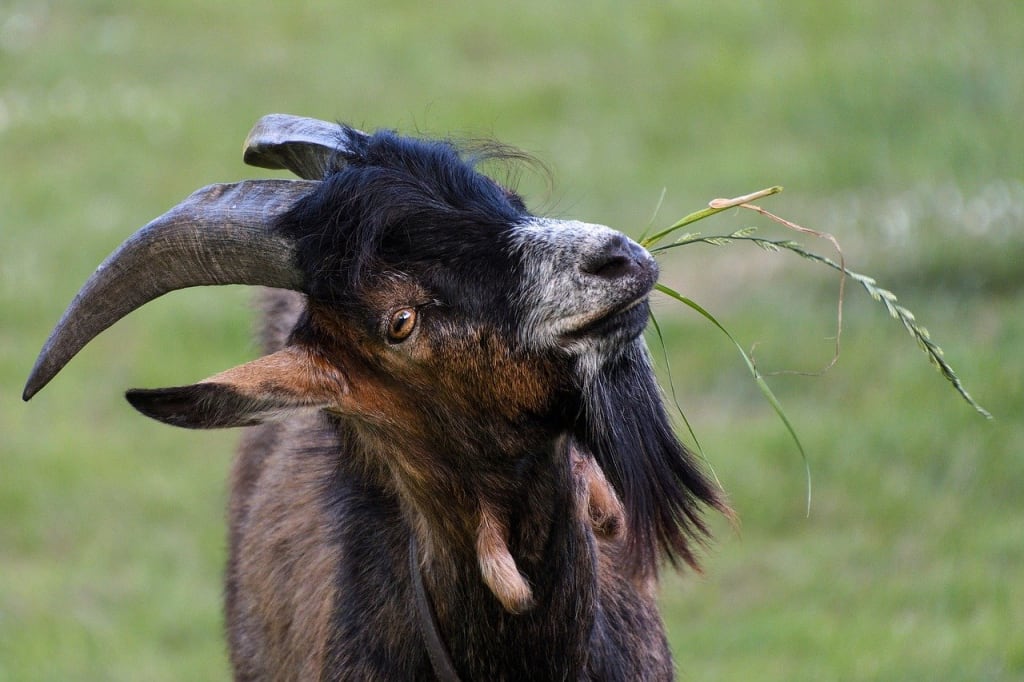Do you Know Goats Screams and Faint?
The internet is full of screaming and fainting goats, but what is the truth behind the memes?

You may have seen footage of goats keeling over and appearing to be frozen in terror. Perhaps you've gone deep into the internet and found a plethora of videos of goats screaming.
But what exactly is going on with the goats?
Goats who are fainting
The myotonic goat, commonly referred as the Tennessee fainting goat, is an American meat goat breed. Myotonia congenita, a hereditary ailment that causes it to stiffen or fall over when startled, characterizes it.
Not all goats go through convulsions. The Tennessee fainting goat is a breed that has become famous for falling over. Myotonic, stiff-legged, anxious, or wooden-leg goats are other names for them.
The goats, on the other hand, do not pass out from fear when they fall. Myotonia congenita is a congenital illness that affects the skeletal muscles, which are used for locomotion, in the Tennessee fainting goat breed. The relaxation of the muscle can be delayed when the muscles are actively tightened, for as while fleeing away from a potential threat. The muscles become rigid, and the animal is unable to move.
The reaction is usually triggered when a myotonic goat is startled by loud noises or a quick movement. The rapid stiffening of muscles as the animal tries to flee can lead them to fall over, giving the impression that they have passed out from fear. The illness affects some goats more severely than others.
When myotonic goats' muscles contract in response to being scared, they can fall over.
The goats are practically helpless in their stiff posture. 'While in this condition, they can be moved or turned over as if they were cut out of a single piece of wood,' geneticist Jay L Lush wrote in 1930.
The muscle rigidity is short-lived, lasting about 5-20 seconds. There is no long-term danger from fainting, unless it is from a great height, although terrified goats are prone to stress.
Fainting goats are assumed to have first arrived in Tennessee, USA, circa 1800, but there is no definitive evidence of their origin. Experts aren't sure if the genetic abnormality that caused their myotonia congenita developed spontaneously or was passed down from another breed.
Fainting Goats' Characteristics
They're bug-eyed and pop-eyed.
They normally have three different ear styles....
They have a medium-length nose and a wide muzzle....
When compared to other breeds of same size, they have more bone density and general muscling.
Weight
Weight ranges from 60 to 170 pounds.
Fainting goats are slightly smaller than ordinary goat breeds, weighing anywhere from 60 to 170 pounds. Males, or bucks as they are commonly known, can weigh up to 200 pounds.
Is it harmful for goats to faint?
Is It Bad For Goats To "Faint"? These goats' "fainting" isn't always hazardous. Only their muscles are affected, not their nervous or cardiovascular systems.
Goats Screaming
Some goats have the sound of a grown man wailing, while others have the sound of human children screaming. Goats yell for a variety of reasons, including calling their young, signaling danger, and begging to be fed, and specialists claim that goats have distinct voices.
With their shouts, goats have long delighted and horrified the public.
However, while some goats make human-like noises, they are simply bleating. Goats bleat in a variety of ways, and each one has its own characteristic sound. Bleats come in a variety of volumes, pitches, and depths.
Goats communicate through bleating. They may make vocalizations when they are hungry, wounded, or if their herd is in danger. When mother goats and their young youngsters become separated, they may call each other.
Goat vocalizations, like human vocalizations, can vary over time. Four groups of pygmy goat offspring born in 2009 and 2010 were used in a study on a farm in the United Kingdom.





Comments
There are no comments for this story
Be the first to respond and start the conversation.